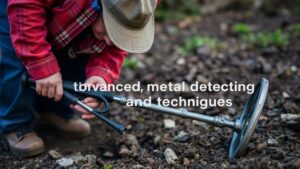Advanced Techniques for Diving and Treasure Hunting in Coastal Waters
Advanced Techniques for Diving and Treasure Hunting in Coastal Waters
Diving and treasure hunting in coastal waters is an exciting field that blends adventure with historical exploration. But, to ensure safety and success, divers must be well-versed in advanced techniques that enhance their skills and knowledge. This article outlines these techniques, supported by concrete examples and data where applicable, and also addresses real-world applications relevant to divers and treasure hunters.
Understanding Marine Environments
Before embarking on any diving expedition, it is crucial to understand the marine environment. Coastal waters may vary significantly in terms of geology, marine life, and human activity. Key aspects to consider include:
- Currents and Tides: Familiarizing oneself with local tidal patterns and currents is essential. For example, the Gulf Stream can affect visibility and diver safety on the eastern U.S. coast.
- Seafloor Composition: Understanding whether the seafloor is sandy, rocky, or coral-covered can influence search strategies. For example, treasure hunters often find artifacts in areas with sediment deposition.
Utilizing nautical charts and current data can help divers make informed decisions during dives. The National Oceanic and Atmospheric Administration (NOAA) provides detailed maps of coastal regions, which can be invaluable for planning dives and treasure hunts.
Equipment Optimization
Proper equipment is vital for safety and efficiency in diving and treasure hunting. Advanced gear options include:
- Full Face Masks: These provide better communication without the need for a regulator, facilitating teamwork.
- Underwater Propulsion Vehicles (UPVs): Diving scooters can extend range and reduce divers fatigue, allowing for longer exploration periods.
Also, making use of advanced diving computers with features like nitrox compatibility and electronic logging can significantly improve dive planning and monitoring. Data from such devices can assist in analyzing dive profiles post-expedition for enhanced learning and future planning.
Search Patterns and Techniques
Useing systematic search patterns is crucial for effectiveness during treasure hunts. Advanced techniques include:
- Grid Search: This involves dividing a search area into smaller grids and methodically covering each section. Australian Institute of Marine Science has documented that thorough grid searches can improve artifact recovery rates by over 15% compared to random searching.
- U-Shape Search: Divers swim in a U-pattern to ensure the efficient coverage of a targeted area. This method allows divers to maintain visual contact with each other while ensuring no part of the search area is overlooked.
The choice of search pattern often depends on the topography of the seafloor and visibility conditions. For example, in rocky underwater environments, divers may choose a zigzag pattern to navigate obstacles while searching.
Underwater Navigation Skills
Advanced navigation skills are essential for coastal diving, especially when visibility is low. Key techniques include:
- Using Natural Landmarks: Divers can use visible features on coastlines as reference points, such as distinctive rocks or buildings.
- Compasses and Dive Computers: A dive compass helps in maintaining a bearing under water, while dive computers often feature tracking capabilities.
Practicing navigation skills regularly in familiar environments can enhance confidence and proficiency. Case studies indicate that divers who participate in navigation training report reduced anxiety and improved performance during actual dives.
Utilizing Technology
Modern technology plays a pivotal role in treasure hunting. Advanced tools include:
- Sonar Technology: Side-scan sonar can help locate submerged objects and delineate seabed structures, offering a visual representation of underwater environments.
- ROVs (Remotely Operated Vehicles): Use of ROVs extends exploration capabilities into deeper waters where human divers may not safely go.
For example, the recovery of the Atocha shipwreck involved the use of ROVs for deep-sea searches, leading to the discovery of considerable treasure in 1985. By leveraging these technologies, treasure hunters can enhance their chances of success dramatically.
Safety Practices and Risk Management
Engaging in advanced diving techniques requires a robust safety protocol. Essential safety practices include:
- Buddy System: Always dive with a partner to assist in emergency situations.
- Emergency Training: Regularly practice emergency drills, including dealing with equipment malfunctions and conducting rescue procedures.
Statistics from the Divers Alert Network reveal that incidents involving inadequate dive planning or failure to adhere to safety protocols contribute to over 60% of diving incidents annually. Adopting rigorous safety measures significantly mitigates risks associated with treasure diving.
Conclusion and Actionable Takeaways
Advanced techniques in diving and treasure hunting require a combination of understanding marine environments, optimizing equipment, employing effective search strategies, enhancing navigation skills, and utilizing modern technology. For aspiring divers and treasure hunters, the following actionable takeaways can enhance their endeavors:
- Invest in high-quality diving gear and familiarize yourself with its functionality.
- Practice systematic search patterns to ensure thorough coverage of target areas.
- Engage in regular technology training, including the use of sonar and ROVs.
- Establish and follow robust safety protocols to minimize risks.
By incorporating these advanced techniques, divers and treasure hunters can not only improve their success rates but also contribute to preserving historical artifacts and marine environments for future generations.



